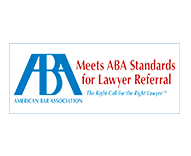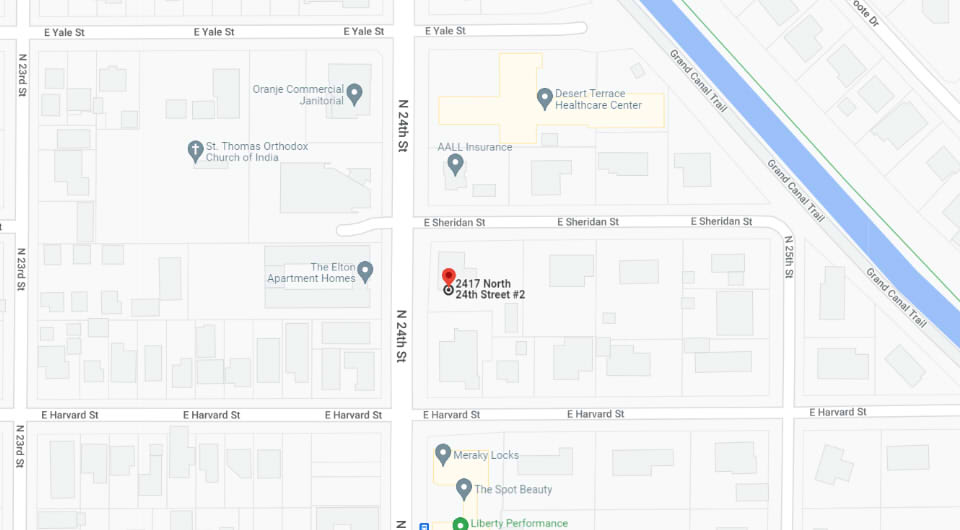Childbirth is among the most momentous events in a person's life. To most people, nothing carries more significance than bringing a healthy newborn into the world. Unfortunately, compared to other living things on the earth, human deliveries are among the longest, most challenging, and hold the most uncertainties. Labor and delivery complications can result in birth injuries that leave families dealing with significant monetary and emotional implications.
We at the Phoenix Personal Injury Attorney Law Firm are committed to assisting people and families who have experienced severe birth injuries due to medical negligence. Our legal team is well-suited to dealing with different kinds of personal injury claims and we understand what could be at stake for both you and your child. Given the complexities of labor and delivery complications, we are available to assist you in identifying the underlying cause of your injuries and help you develop an action plan that best serves your or your loved one's needs.
Common Complications that Can Occur During Labor and Delivery
It is essential to keep track of both the mother's and the baby's vital signs throughout labor because, at this time, the mother's body could be experiencing great stress. A mother and her unborn child could be at risk of life-threatening injuries when she receives inadequate care or when medical professionals make mistakes.
Below are among the most common complications that arise during labor and delivery:
- Malposition.
- Shoulder dystocia.
- Prolonged labor.
- Excessive bleeding.
- Premature rupture of membranes (prom).
- Prolapse of the umbilical cord.
- Rapid labor.
- Breech position.
- Jaundice (kernicterus).
- Placental issues.
- Placental complications.
- Uterine rupture.
- Umbilical cord issues.
- Necrotizing enterocolitis or intestinal inflammation.
- Blighted ovum.
- Birth injuries from premature birth.
- Amniotic Fluid Embolism (AFE).
- Unusual cord insertion.
- Developmental delays.
- Infections.
- Preterm birth.
- Placental abruption.
- Oxygen deprivation.
Procedural Complications
- Episiotomy complications.
- Epidural complications.
- Forceps delivery complications.
- C-section complications.
- VBAC complications (Vaginal Birth After Cesarean).
Although difficulties can occur at any time during pregnancy, the risks - and the likelihood of life-threatening mistakes by healthcare professionals - are greatest during the labor and delivery process.
The choices made by medical staff in the delivery room, as well as the issues they identify and the steps they take to address them, can mean the difference between the delight of ushering a newborn into this world and the grief of severe birth injuries or sustaining injuries as the mother.
Are All Delivery Complications Considered Medical Malpractice?
Although some difficulties during childbirth are unavoidable regardless of how careful the attending physician or midwife is, many such problems are the consequence of preventable medical mistakes.
Medical malpractice happens when a medical professional—such as a nurse, doctor, or hospital—causes injuries to a patient by neglecting to deliver the required level of care. Medical negligence can occur during labor when a healthcare professional fails to recognize or properly handle delivery complications that result in harm or injuries to a baby or mother.
Medical malpractice during childbirth happens when nurses, doctors, or other medical personnel fall short of providing the level of care that is expected, resulting in harm to the child.
Medical practitioners are educated and well-equipped to respond properly in challenging situations to protect newborns and their mothers. When an emergency arises, waiting too long to act could result in serious short-term as well as long-term injuries.
Medical malpractice can happen before, during, or soon after a child is born. The following are a couple of instances of common delivery complications that could lead to medical malpractice claims:
Failure to Diagnose or Properly Address Fetal Distress
When the infant's oxygen supply is cut off during childbirth, it is referred to as fetal distress. Healthcare professionals must keep an eye on the child’s pulse and respond appropriately if they notice any distress signs. Failure to diagnose fetal distress or respond appropriately, such as by performing an emergency cesarean delivery, could result in cerebral palsy, brain damage, and possibly death.
Improper or Delayed Application of Delivery Instruments
The use of delivery devices like a vacuum or forceps could be necessary if the baby is having difficulty making its way through the mother's birth canal. If these tools aren't used quickly enough or if they're used incorrectly, the infant could sustain injuries like damaged nerves or a fractured skull.
Failure to Identify and Address Issues Related to Maternal Health
Obstetrical difficulties can be more likely in women who have maternal health issues such as preeclampsia, placental abnormalities, or gestational diabetes. To reduce the risk of injury to both the baby and mother, healthcare professionals have a responsibility to identify and treat these conditions.
Failure to handle these conditions can lead to serious complications, such as hemorrhaging, stroke, damage to organs, infections, nerve damage, fractures, cerebral palsy, or even death.
Delay in Performing a Cesarean Section Delivery
A cesarean section could be necessary to prevent problems during labor and delivery, including fetal distress or prolonged labor. Healthcare professionals have a responsibility to determine when a C-section birth is required and carry out the procedure promptly. Failing to do this could bring the mother or child serious harm or death.
Healthcare professionals have a responsibility to watch over the child and mother, identify and handle any delivery-related complications quickly, as well as taking the necessary precautions to prevent injury. If they don't, they can be held accountable for damages in a birth injury claim.
Medical Negligence Soon After Delivery
Birth injuries caused by medical negligence could still occur after the baby is born. Medical personnel must keep an eye on the mother and child after birth for any potential difficulties. Not doing so could have devastating consequences.
Medical negligence that can occur soon after birth comprises the following:
- Not diagnosing and treating newborn jaundice.
- Failure to prevent mother's or baby's death.
- Failure to address a mother's uterine tears or ruptures.
- Not keeping track of the child's vital signs.
There can be serious consequences for both the child and mother if any of these things occur during pregnancy. If you're concerned that your baby was injured during childbirth as a result of medical negligence, you can contact a personal injury attorney to help with your case.
Injuries Sustained By the Mother During Birth
When a doctor or any other medical professional is negligent, a mother could experience any number of complications that could lead to the following injuries:
- Internal organ injury brought on by wrong C-section surgical tool use.
- Medical supplies left over from a cesarean section.
- Infections.
- Seizures caused by untreated preeclampsia.
- A ruptured uterus.
- Anesthesia complications.
- Excessive bleeding.
Injuries Sustained By the Child
Infants are susceptible to many different kinds of injuries. However, not all birth injuries can lead to a solid malpractice claim. Some injuries sustained by infants during the delivery process include:
Bone Fractures
Among the most prevalent birth injuries are fractured bones. The most common fractures that occur during childbirth involve the collarbone and the upper arm bone. Sometimes a genetic issue might make bones more prone to breaking. Some bone fractures that happen during a typical birth will heal.
Shoulder Dystocia
This is an issue that can occur after a vaginal birth if the infant's shoulder gets stuck in the mother's pelvic bone.
When shoulder dystocia occurs during birth, the baby's health is put at risk. When a baby gets stuck in the delivery canal due to shoulder dystocia, the risk of brain damage and possibly death increases because of oxygen deprivation.
To prevent hypoxic injuries, medical professionals treating shoulder dystocia must act immediately to remove the baby. The trapped shoulder can be released using many different kinds of techniques. However, the tendency for shoulder dystocia to become a two-edged sword renders it extremely risky for the newborn.
Unfortunately, the treatment for shoulder dystocia can be as dangerous to the newborn as the problem itself. Nurses and doctors in the birth room often apply excessive lateral force or traction in their haste to remove the baby's shoulder. The baby suffers injuries as a result of their excessive pulling, pushing, and twisting.
When this condition is not treated right away, the resulting oxygen deprivation can harm the child's brain and lead to problems like cerebral palsy. Shoulder dystocia could lead to broken collar bones and injury to the brachial plexus nerves within the neck if the patient is pulled with too much force. Erb's palsy is a unique birth injury caused by this sort of damage to the nerves.
Brachial Plexus Palsy
A baby's shoulder is surrounded by a group of nerves known as the brachial plexus. During childbirth, these nerves may be stressed or stretched, which could result in injury. Infants who experience brachial plexus injuries during birth may experience arm weakness or lack of mobility.
Caput Succedaneum
The newborn develops caput succedaneum when the scalp swells. This typically occurs when the baby's head gets squeezed during a challenging birth. It could also happen after a vacuum extraction. The swelling could be accompanied by bruising, but this usually goes away within a couple of days.
Cephalohematoma
Cephalohematomas can develop as a result of vacuum extraction when bleeding occurs beneath a baby's scalp. Most of the time, cephalohematomas go away on their own within a couple of weeks of birth.
Death
There are instances where an infant dies as a result of birth injuries sustained during labor and delivery. These kinds of cases can give rise to wrongful death claims and are complicated and emotionally taxing.
Hypoxic-Ischemic Encephalopathy
If the infant's brain doesn't receive blood and oxygen for a while during birth, they may develop hypoxic-ischemic encephalopathy. Children with HIE are susceptible to several conditions, such as cerebral palsy, epilepsy, or developmental conditions. The length of time that the infant's brain was deprived of oxygen and blood flow will determine the extent of the baby's condition.
Skin and Soft Tissue Injuries
A baby's skin could be injured during delivery due to the application of medical equipment or stress from contractions. Birth-related skin injuries frequently cause swelling and bruising. Injuries to an infant's subcutaneous fat layer will also cause red, raised spots to emerge on the baby's skin. Usually, fat-layer injuries heal on their own without the need for medical intervention.
Long-Term Implications of Labor and Delivery Complications
Regardless of whether your newborn has shoulder dystocia or nerve or brain damage from not getting enough oxygen, you realize that birth injuries have long-term effects on children and their loved ones. Birth injuries can sometimes manifest even after a kid has been discharged from the medical facility.
In other scenarios, the infant will require an extended hospitalization before being allowed to go home. Certain birth injuries may result in long-term, permanent challenges for children. Birth injuries can be devastating for families in many ways, including permanent brain damage, learning disabilities, difficulties communicating, and delayed development of motor skills.
Costs Related to Negligent Labor and Delivery
The costs incurred by negligent labor and delivery could be exorbitant. Babies with birth injuries face even more costs beyond their initial hospitalization and delivery. This can be just the start of what could result in expensive medical expenses for the rest of their lives.
It is crucial to meet with your attorney to discuss a long-term strategy for paying medical bills. You must account for what may potentially be many surgeries or medical procedures, occupational therapy, physical therapy, speech therapy, prescription drugs, medical equipment, and many other healthcare expenses that could increase throughout the baby's lifetime.
Birth injuries might be so serious that long-term hospitalization or home care is necessary. For many households, it could be essential for one of the parents to give up their job and stay with the child full-time.
Birth Injuries Malpractice Claims
To evaluate if your child's birth injury was brought on by medical malpractice, a lawyer and a medical professional will look into what transpired and if the procedure used satisfied the appropriate standard of care.
The quality of care expected of a healthcare professional varies according to the specialty of the attending physician, the location, and the physician's training and experience. Medical professionals are obligated to treat patients in a way that's consistent with the level of care that would be anticipated of a reasonably competent medical professional working in a similar field and setting.
A Phoenix-based obstetrician, for instance, would be judged against another Phoenix-based obstetrician with similar training and experience, and not against a different sort of physician or medical professional in another region.
When determining the acceptable level of care, a trained medical expert contributes to the process by taking into consideration any details that the medical practitioner was aware of at the moment that the baby's or mother's injuries occurred.
Once the lawyer and the healthcare professional have determined the appropriate standard of care required, the treatment provided will be evaluated in light of that standard.
Medical professionals analyze every element of the labor and delivery process and contrast it against what a comparably skilled physician would have accomplished under the same circumstance given the knowledge that would logically have been accessible at the time.
If the healthcare professional concludes that what the doctor did fell below the accepted standard, the next stage is to establish whether or not this substandard care was the direct cause of the mother's or child's injury.
For instance, if issues emerged during labor but the doctor did not opt for a C-section, but the child was stillborn, this does not always suggest that the doctor's decision was the cause of the stillbirth. It isn't possible to sue the doctor for negligence if the infant would've died regardless of whether a C-section was done.
If it is determined that the provider's carelessness was the cause of the birth injuries, then the attorney will assess the losses that occurred from the injury.
To bring a medical negligence lawsuit, you need to show quantifiable damages. You can opt not to claim if you did not sustain enough losses to warrant the cost and effort of taking legal action. Nevertheless, if you sustained huge losses, you can anticipate the accused will continue to aggressively dispute your complaint.
Taking Legal Action Against Labor and Delivery Medical Malpractice
Nurses, doctors, and other healthcare professionals have a responsibility to offer high-quality medical care to expectant mothers in the labor and delivery room. Small errors can have major consequences and could lead to medical malpractice in cases of birth injuries.
Medical errors made during childbirth could have long-lasting effects on both the child and the mother. Unfortunately, the cost of birth injury treatments can be exorbitant for many families.
Injuries caused by poor medical care should not financially burden anyone's family. If your child suffered an injury during delivery that could have been avoided, you may be eligible for financial compensation when you file a claim for medical malpractice.
If you suspect that your child has a birth injury as a result of medical malpractice, you could work with an experienced personal injury lawyer to have your rights protected throughout this process.
Find a Phoenix Medical Malpractice Injury Attorney Near Me
If you or your child were injured during labor or delivery, the Phoenix Personal Injury Attorney Law Firm is here to help. We have been successful in securing financial compensation for our clients and are committed to giving each case the individual focus it deserves. To speak with one of our personal injury lawyers about your case, call us today at 602-641-9589.










